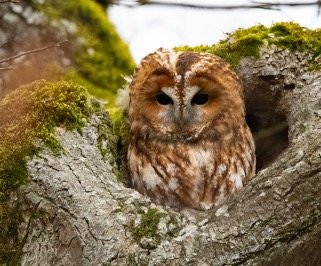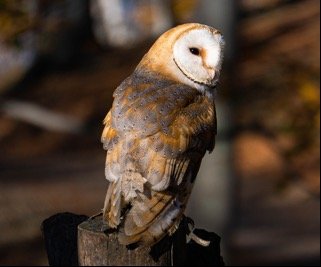
Are Owls Dangerous To Humans?
The short answer is that owls are rarely a threat to humans. Despite the fact that owls may be found in almost every country on the planet, many individuals have never seen one in their lifetime.
However, when people learn that they reside in all 50 states of the United States, the first question they ask is whether or not they are dangerous to human beings.
Continue reading as we investigate owl behavior to determine whether or not we should take any precautions to protect ourselves.
Why Do Owls Attempt to Attack Humans?
The answer to this question depends on the type of owl in question, and their attitude towards humans. Most people think that all owls are dangerous, but this isn’t true in all cases.
Why Do Owls Hoot? All You Need To Know
If you want to know more about whether or not an owl would pose a threat to you, read on and we’ll take you through some of the most common species of owl, and whether or not they are dangerous to humans or pets in general.
1. Owls Are Bird Of Prey
In the same way that eagles, falcons, hawks, buzzards, and vultures hunt and consume other animals rather than seeds or worms, owls are classified as birds of prey (also known as predators).
The majority of owls prefer to consume tiny rodents such as mice and moles, but they will also eat reptiles, amphibians, insects, and even small rabbits and hares if they are available. As a result of their fast metabolic rate, they must consume large amounts of food on a regular basis.
5 Simple & Proven Ways To Attract Owls To Your Yard
Because they have difficulties digesting their food when it is eaten whole, they regularly regurgitate it into pellets that may be found in and around their nesting location. The fact that humans are so enormous makes it unlikely that most owls will consider them as a prospective food source.
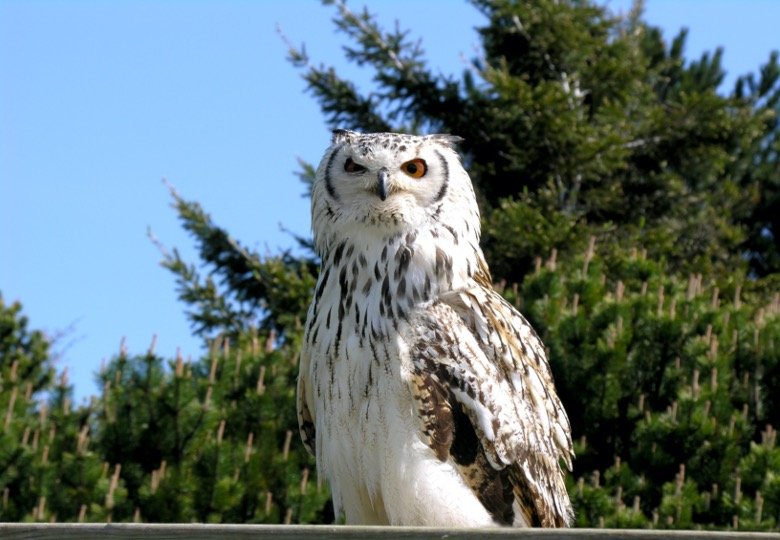
2. Deforestation And Habitat Destruction
As previously stated, many people are unaware that owls may be found throughout the United States, including Alaska and Hawaii, and that habitat destruction is a serious threat to their survival.
It is also possible for humans to intrude into their territory and come too close to their nests without recognizing it. If the owls have babies, they are more likely to become aggressive than they would otherwise be, according to the research.
3 Most Dangerous Owl Species
1. Great Horned Owls
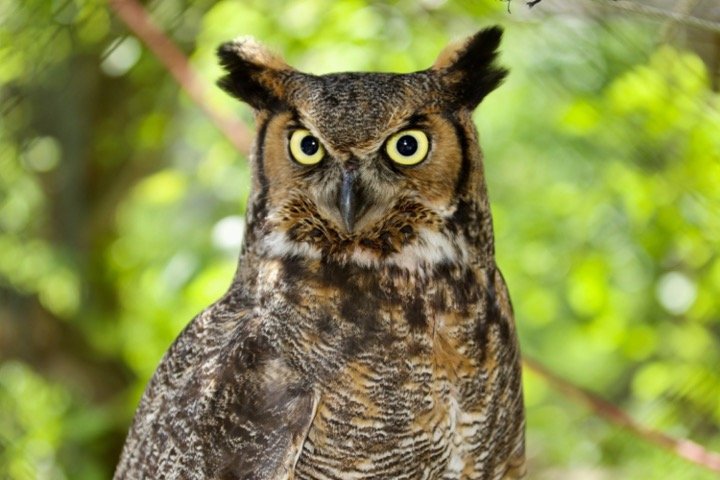
Many people refer to the Great Horned Owl as the “tiger of the sky” because they are strong hunters who do not discriminate when it comes to what they consume. It loves to live near cities so that it can be in close proximity to humans, and it attacks by striking the face and head.
15 Cutest Owls In The World
It has razor-sharp talons and is capable of carrying four times its own weight. The Great Horned Owl may be found all over the United States, and while attacks on humans are extremely rare, they do happen, as seen by the numerous news articles recording such attacks.
2. Barred Owls

In addition to the Great Horned Owl, the Barred Owl is another aggressive owl species that can be found in the eastern United States as well as tiny regions of the northwestern United States.
Despite the fact that Barred Owl attacks on people are extremely rare, the bird has been implicated in at least one homicide in which the wrong man may have been put to prison.
These birds, which some people refer to as Striped Owls, love to reside in mature forests where they hunt for birds, reptiles, and amphibians, among other prey.
3. Snowy Owls
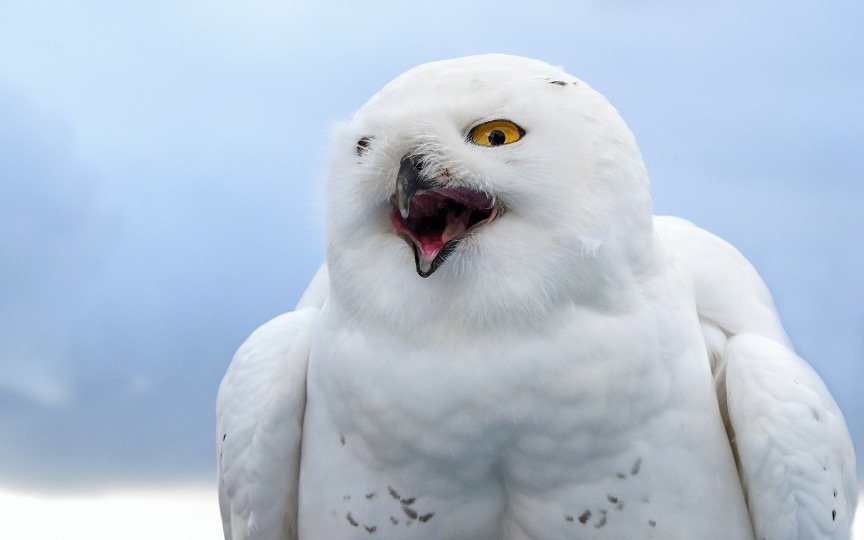
When on the attack, the snowy owl is a big bird that may reach more than 18 inches tall, making it highly intimidating to anyone who comes across it. Because it is only found in Maine and the far northern regions of the United States, it poses no threat to the majority of the population in the United States.
Do Owls Hoot During the Day? All You Need To Know
It is one of the world’s greatest avian predators, and it is the heaviest and longest winged owl in North America, as well as one of the largest in the world.
They are active at all hours of the day and night, and they normally do not fight humans unless they get within a short distance of their nesting location, which they protect fiercely.
How to Avoid Being Attacked by an Owl?
• In the event that you hear the distinctive hooting of an owl, keep your pets indoors.
• The owl may be hooting to warn you that you are approaching its nest if you hear it while you are performing yard work or out for a walk in your neighborhood. In virtually every scenario, the owl will make an attempt to warn you before attacking, so don’t ignore the warning call.
• In the event that you come across an owl that appears to be acting violently, we recommend clapping your hands and shouting, which will send it flying away.
• It is possible that the owl will be disoriented by a flash from a camera or a smartphone flashlight, causing it to flee.
• Carry an umbrella or a long branch with plenty of leaves to protect yourself from the sun. Due to the fact that owls like to attack from the highest position, they will attack your umbrella or a branch rather than your head.
6 Reasons – Why Do Owls Bob Their Heads?
• Ensure that your property is devoid of hiding places for rodents, such as woodpiles, which can attract owls.
• Large mirrors should be placed around your house to deter it from becoming scared by its own reflection.
• The use of lighting can help keep nocturnal owls at bay.
• Avoid owls utilizing posts and fencing as perches while stalking your property by installing bird spikes around the perimeter.
Does Owls Dangerous To Dogs And Cats?
Owls can be exceedingly deadly to small dogs and cats, particularly if there are adjacent woodlands with a huge clearing that the owls will utilize as a hunting site. Given the fact that owls fly silently, they can sneak up on your pet and cause significant damage, as well as possibly take them away.
How Can You Tell If An Owl Is Dangerous?
You can tell if an owl is dangerous by observing its behavior and appearance. The vast majority of owls are not harmful to humans, though some species are very small and should be respected as they could harm a child or small animal.
In North America, only three species regularly prey on mammals: barn owls, long-eared owls, and short-eared owls; all live in open country where they can easily find their prey.
What Should You Do If You See An Owl?
While some owl species are indeed capable of killing a human, it’s not something that should keep you up at night. If you come across an owl in its natural habitat (while hiking through woods, for example), make sure to watch your step.
Accidentally stepping on an owl could lead to injury for both parties. And if you have pets outside, keep them inside—owls have been known to attack and even kill cats and dogs.
Sleeping Owls Are So Adorable: Pictures & Fun Fact
Should I Run If I See An Owl?
Owls have not been known to harm humans, though some (particularly great horned owls) will sometimes swoop down and attack cats or other small animals. Unless you’re a hunter, it’s unlikely that you’ll ever encounter an owl in its natural habitat; they tend to stay hidden when people are around.
If you do happen to see one of these nocturnal creatures during daylight hours, it may be sick—in which case, it should be left alone for conservation purposes.
Should I Touch An Owl If It Lands On Me?
An owl landing on you may seem like a blessing from Mother Nature, but it’s actually a sign that something isn’t right. If an owl lands on you, or another human, don’t touch it—and definitely don’t try to catch it.
The bird has probably landed on you for one of two reasons: either it is hurt and needs to rest before taking off again, or it is being territorial and feels that your presence poses a threat.
What Eats Owls? 7 Predators That Eat Owls
Do All Owls Bite Humans?
It’s a tough question, but I can honestly say that all owls don’t bite people. Yes, it may look like they have huge beaks and scary talons, but most owls are quite small when compared to other birds of prey.
Which Species Are Most Likely To Attack Humans?
There are four North American species of owls that frequently attack people and pets, including barred, great gray, northern saw-whet and long-eared owls.
The Great Horned Owl is actually not normally a threat to humans. When it does go after humans, it is because it feels threatened by them or believes they are threatening its young.
Can Owls Rotate Their Heads? All You Need To Know
Take Away Message
Because the vast majority of humans will spend their entire lives without ever seeing an owl, the threat they pose is low. They may, however, be extremely dangerous if they have you in their sights, and such attacks have even resulted in fatalities in some cases.
Knowing what type of owls dwell in your region and what type of habitat they prefer will enable you to identify prospective nests on your property, which will keep you and your pets safe in the long term.
